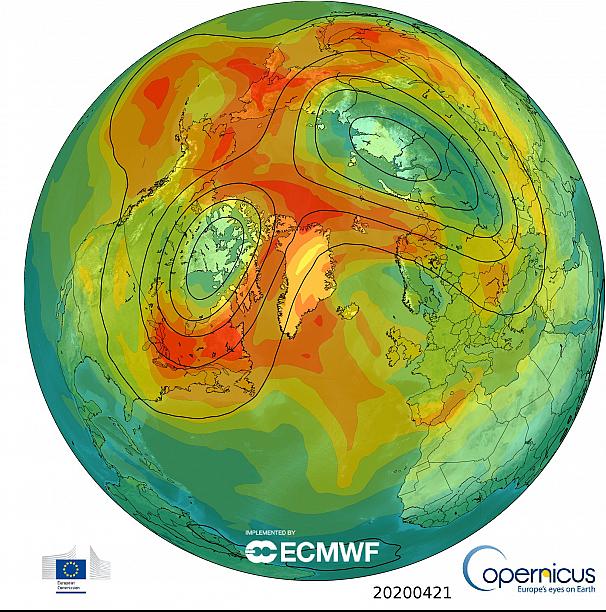Largest hole in ozone layer mysteriously disappeared during COVID-19 lockdown
Arctic Ozone Layer Hole Closes Within A Month of the COVID-19 Lockdown: Coincidence?
On April 23, it was reported that the largest-to-date ozone layer hole that had opened up over the Arctic is now entirely closed. What caused this incredible phenomenon?
The ozone layer shields the Earth from most of the Sun’s ultraviolet radiation, which is a major cause of skin cancer. This Arctic ozone hole had been discovered in late March and was thought to have formed as a result of very low temperatures at the north pole. This hole produces stratosphere clouds that were beginning to destroy the Earth’s ozone layer by reacting with certain (CFC) gases.
If this hole had moved further south, it would have very direct and detrimental effects on humans. But on Thursday, April 23, Copernicus (the EU’s earth monitoring program) announced the hole had now suddenly closed.
The closing had, in fact, nothing to do with the reduction in pollution caused by having much of the world in a COVID-19 lockdown.
Instead, it’s down to the high-altitude currents that normally bring cold air to the polar regions. It is for this reason that it is referred to as a polar vortex. This has now split in two giving the Arctic region a relative heatwave, with temperatures up to 20ºC higher than is normal for this time of year.
“We don’t know at the moment why the dynamics were so unusual this winter,” Copernicus scientist Antje Inness said. “I’m sure many scientists will do modeling studies to find out the reasons for this.”
The only direct consequence of this is increased UV exposure in areas through which this ozone hole has passed: Alaska, Canada, Greenland, and even parts of Russia.

Sabha is a senior at NNHS. She is the Managing Editor for North Star News and the Niles North Journalism/News Production. Check out her articles in our...












